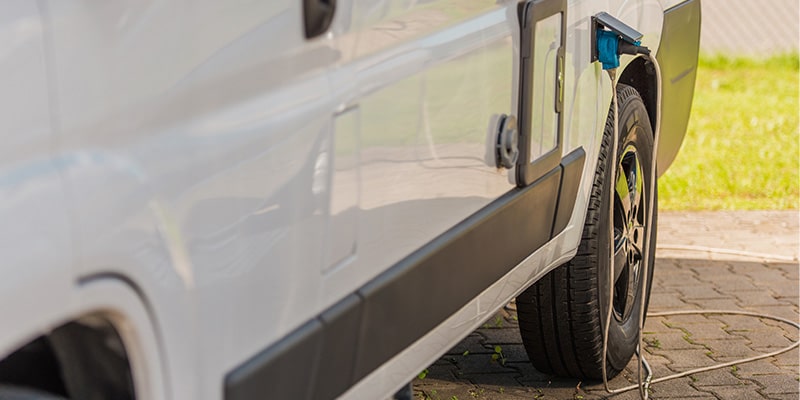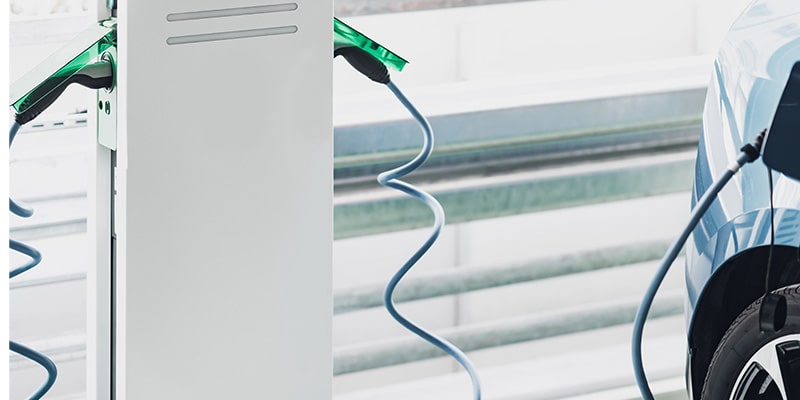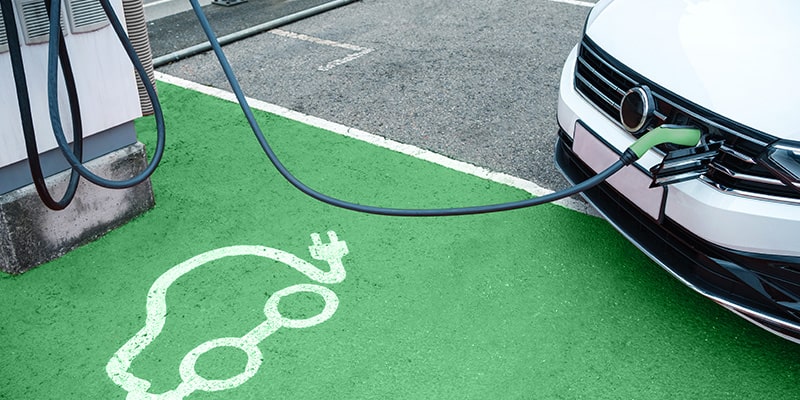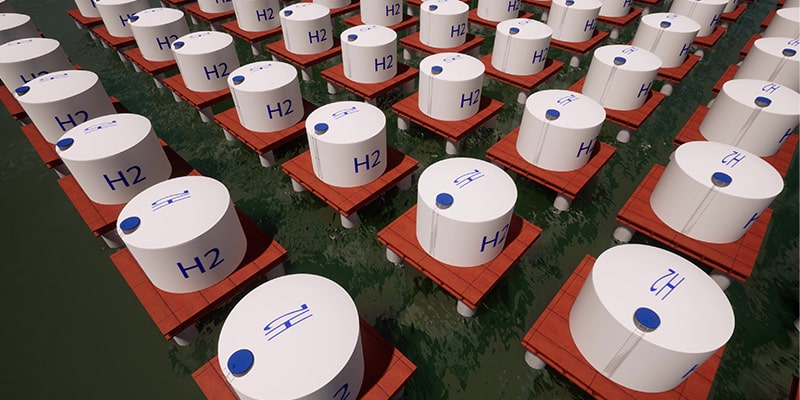What Does the Future Hold for Electric Vans?

Electric car sales are absolutely booming year on year, you only need to spend an hour on the motorway to see that. In 2022, new EV registrations were as much as 40% higher than 2021. That said, this still only accounts for less than a fifth of all cars sold.
Whilst but a fraction of this new wave of electric vehicles, electric vans are seeing similarly exponential growth. Where once a fad, many different models of EV are now being produced to a growing base of supporters in the trade.
Contents
- How Far have Electric Vans Come?
- Is Electric Really Better Than Petrol & Diesel?
- The Next Ten Years
- What Comes After Electric Vans?
How Far Have Electric Vans Come?
Despite only coming into prominence in the last decade or so, Electric Vehicles have been in development for over a century. It’s only now, with the sharp rise in fuel costs that they’ve become a major topic of conversation. Particularly for van drivers and couriers who have to travel far more than most.
In the past, most EVs were heavily criticized for unusable small driving ranges which, combined with the lack of charging stations, made them completely unrealistic for everyday use. Now, however, with Vans including Renault's Traffic E-Tech and Ford's E-Transit Custom, boasting a 146 and 236-mile range capacity respectively E-vans are quickly becoming a far more appealing notion.
Better yet, there is far more variation coming to electric vans. Whether that be the innovations of new manufacturer Arrival, making their vans using composite panels and aluminium for a potential max. payload of 1975kg, Chinese car marker BYD making smaller, practical vans or even Morris. The commercial brand brought back to life here in the UK to produce a classically styled van with all the bells and whistles of modern electric vehicles.
Whatever your preference in a van, it’s clear to see that manufacturers the world over are moving to make electric the future standard.
Is Electric Really Better Than Petrol & Diesel?
It’s a debate that petrol heads have already been struggling to have for years, but even now some still doubt that the future, for better or worse, will be electric. It has to be. Not only because of our government's promise to phase out the sale of new petrol and diesel vehicles from 2030, but also because new technology is quickly making petrol cars the more expensive option long-term.
Fuel Costs
We all know that it is cheaper to charge up an electric vehicle than it is to fill one up with petrol. We’ll save you the speel and instead demonstrate exactly how significant these savings can be.

Let’s take the Mercedes eCitan, which launched last year. It has been built with a 44Kwh (Kilowatt hour) battery with an approx. range of 177 miles per charge. At public charging stations, for example, BP pulse (currently one of the most popular) charging, at their cheapest tariff, costs 44p per Kwh. This is with their subscription costing roughly £7.85 a month.
Tofill the eCitan then, it would cost around £19.
As for a petrol equivalent, it costs on average 19.1p per mile to fill a van up with fuel. To cover the same 177 miles as the eCitan this would make it roughly £34. Over the 14,000 mile average that van drivers tend to cover a year, this makes an annual saving of well over £1000.
Environmental Impacts
The environmental benefits of EVs are one of the most heavily debated topics when discussing their surge in popularity. Whilst on the surface, a fully electric vehicle is, by its nature, ‘zero emissions’ a direct comparison to gas cars reveal that it is not so cut and dry. Rest assured though; they are still more environmentally friendly in the long run.
Just like gas cars, EVs create emissions during their manufacturing process – in fact, due to the intensive manufacturing of lithium batteries some electric cars, including the Tesla Model 3, can create as much as 80% more CO2 emissions than a comparable gas-powered car.
This is nothing, however, compared to the emissions they produce when on the roads. Not all electricity is clean. In fact, just under half of the electricity produced in the UK in 2022 came from burning natural gas and coal. More was imported, and more still came from storage leaving just under half produced from renewable sources, 39% in August.

The BIG caveat here, however, and the reason why MIT Climate concluded that EVs are still better for the environment long-haul is because of fuel in the future. Whilst, not all EVs run on clean energy now, they are perfectly able to. Meaning that when (and if) the UK reaches its goal of being carbon neutral our cars will be ready.
Countries that produce most of their energy sustainably, Norway for example, are already seeing significantly lower carbon footprints from EVs than from gas-powered vehicles – taking into account their manufacturing and projected lifetime use.
A study from MIT demonstrated, using the average carbon density of America’s power grid, that EVs are responsible for 25% less carbon than comparable hybrid cars. A difference that grows further compared to gas.
Even if your average EV lasted half its expected millage, the difference in emissions would still be 15% in their favour. And this is in a country where in 2021, just 20% of the electricity generated came from renewables.
The Next 10 Years
The government’s road map for electric vehicles is quite clear. In the coming years the focus will be on introducing more rapid changepoints in every motorway service area – making charging your EV far easier and longer journeys more practical.
After this new company car tax rates are looking to be introduced which will be favourable to businesses will zero-emission vehicles. This is slated to last until at least March 2025. Moving forward 5 years, all government vehicles should be 100% zero emission and at least 2500 more high-powered changepoints should be rolled out across the strategic road network.
All of this is in preparation for the new electric cars and vans. All of which will have to deliver significant emission capability from 2030 until 2035 where all new vehicles will have to be electric and 100% emission-free.
Government Grants
To promote these changes and make them as stress-free as possible for van owners, the government has also introduced a few grants for prospective buyers.
As simple as grants can be, the PICG is a £5000 discount applied to eligible EVs (including vans and trucks) that dealerships and manufacturers can apply for if the vehicle is being sold for under £32,000. You don’t need to do anything, except perhaps ask your dealer if this discount has been applied.
One major benefit EVs have over petrol and diesel cars are that you can charge them up at home. The OZEV grant cuts 75% (or £350) off the cost of having one of these charging points installed and is available for landlords, those who own or rent a flat, public car parks and more.
What Comes After Electric Vans?
Turn back the clock a few years and you’ll find that in addition to electric cars, hydrogen-powered vehicles were also pegged to be the future of driving. They also produce completely zero emission from their tailpipes and, unlike EVs, don’t require the construction of emission-heavy lithium batteries nor the mining of cobalt.
That’s not to say that hydrogen cars are completely clean. Hydrogen is not naturally occurring on our planet in its pure form, meaning it needs to be produced from water, gas or biomass. For now, there are two ways that you could go about this. First, reversing the electrolysis process of water, essential separate the H20 molecules from the water. And second, taking it during the process of natural gas reforming.

Unfortunately, whilst this first option is far more environmentally friendly it is less efficient and more costly. This is why most hydrogen in cars is produced using gas which leaves harmful carbon dioxide and monoxide as a by-product.
For the time being, it seems unlikely that hydrogen cars will take the mainstream. However, assuming the planet becomes carbon neutral (as the UK promises to in 2050), renewable sources are used to provide the energy required to separate H20 from water there is a very real possibility hydrogen could be to EVs what EVs were to petrol and diesel.